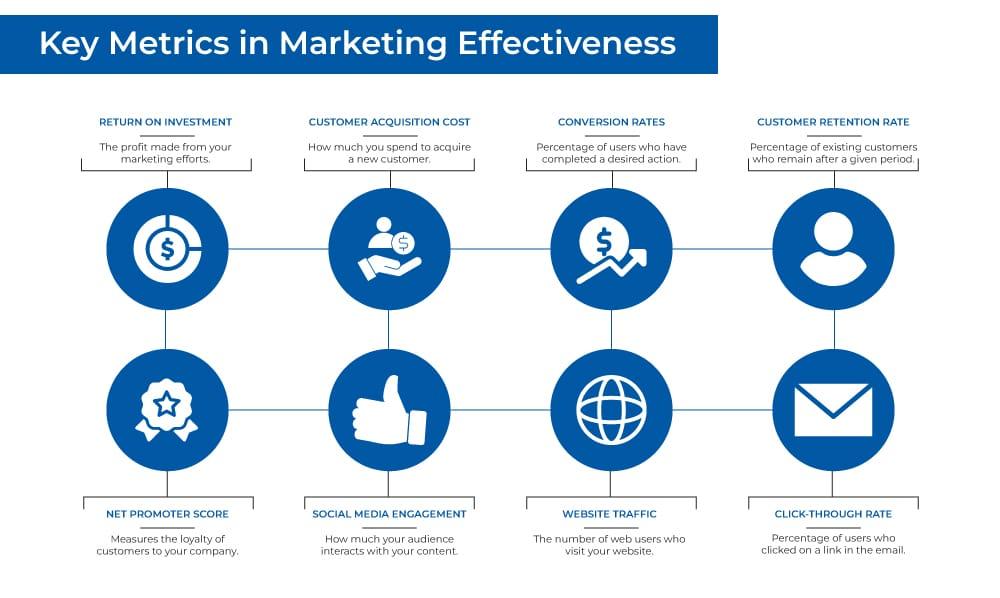In today’s data-driven sales landscape, numbers reign supreme. From revenue and growth to conversion rates and customer lifetime value, sales metrics provide crucial insights into performance and guide us towards our goals. However, the abundance of data available can be overwhelming. Instead of drowning in a sea of numbers, sales teams need to identify and focus on the key performance indicators (KPIs) that truly matter – the ones that directly impact the bottom line.
What Are Sales Metrics and Why Do They Matter?
Sales metrics are quantifiable data points that track and measure the performance of your sales team, strategies, and overall sales operations. They offer a clear picture of what’s working, what’s not, and where improvements can be made.
Think of it this way: if you’re sailing a ship without a compass, you’re likely to get lost at sea. Similarly, without proper sales metrics, your team is navigating blind.
By tracking the right sales metrics, you can:
- Measure Sales Team Performance: Assess individual and team performance against targets, identifying top performers and areas for improvement.
- Make Data-Driven Decisions: Base strategic decisions on concrete data rather than assumptions, leading to more effective sales strategies.
- Optimize the Sales Process: Pinpoint bottlenecks and inefficiencies in the sales pipeline to streamline operations and accelerate sales cycles.
- Improve Forecasting Accuracy: Develop more reliable sales forecasts based on historical data and trends, enabling better resource allocation and planning.
- Boost Revenue and Profitability: Ultimately, by focusing on the metrics that matter most, you can drive revenue growth and improve overall profitability.
Identifying Your Key Sales Metrics
The first step in harnessing the power of sales metrics is identifying the KPIs that align with your specific business objectives. While there are numerous metrics to choose from, it’s essential to focus on a select few that will provide the most valuable insights.
Here are some key considerations:
1. Align with Business Goals
Begin by defining your overarching business goals. Are you aiming to increase market share, launch a new product, or expand into a new territory? The KPIs you choose should directly support these objectives.
For example, if your goal is to increase market share, you might focus on metrics like:
- Number of New Customers Acquired: This metric tracks the effectiveness of your marketing and sales efforts in attracting new customers.
- Customer Acquisition Cost (CAC): Understanding how much it costs to acquire a new customer helps determine the efficiency and profitability of your sales and marketing campaigns.
- Customer Lifetime Value (CLTV): Measuring the total revenue generated by a customer over their entire relationship with your business provides insights into long-term profitability.
2. Distinguish Leading and Lagging Indicators
Leading indicators are proactive metrics that provide insights into future performance. They measure activities that contribute to achieving desired outcomes. Lagging indicators, on the other hand, reflect past performance and are often the results of previous actions.
For instance:
- Number of Sales Calls Made (Leading Indicator): This metric reflects the effort your sales team is putting into generating leads and opportunities. By increasing the number of sales calls, you can potentially drive higher sales in the future.
- Total Sales Revenue (Lagging Indicator): While total sales revenue is a crucial metric, it represents the outcome of previous sales activities. It’s essential to analyze the leading indicators that contribute to this revenue figure to understand what drives sales success.
3. Understand Your Customer Journey
To optimize your sales process, you need a deep understanding of your customer journey – the path a customer takes from initial awareness to purchase. Analyze each stage of the journey and identify the key touchpoints and interactions that influence customer decisions.
Consider using metrics like:
- Website Traffic: Track the number of visitors to your website and analyze their behavior to understand how they find you and what interests them.
- Lead Conversion Rate: Measure the percentage of leads that convert into paying customers to assess the effectiveness of your lead nurturing and qualification processes.
- Sales Cycle Length: Analyze the time it takes to close a deal and identify any bottlenecks or areas for improvement in your sales pipeline.
Putting Sales Metrics to Work: Best Practices
Once you’ve identified your key sales metrics, it’s crucial to implement systems and processes to track, analyze, and leverage this data effectively.
Here are some best practices:
1. Choose the Right Tools
Invest in sales analytics and CRM software that can automate data collection, provide real-time insights, and generate comprehensive reports.
2. Set Clear Targets and Benchmarks
Establish realistic yet ambitious targets for each KPI and track your progress regularly. Use industry benchmarks and historical data to set realistic expectations.
3. Communicate Effectively
Share relevant data and insights with your sales team regularly. Use clear and concise dashboards and visualizations to make data accessible and understandable.
4. Foster a Data-Driven Culture
Encourage your sales team to embrace data-driven decision-making. Provide training on data analysis and interpretation to empower them to use data to improve their performance.
5. Continuously Review and Optimize
Regularly review your chosen KPIs to ensure they remain relevant to your business goals and adapt your strategies based on the insights gained from data analysis.
By mastering the art of sales metrics, you can transform your sales operations from guesswork into a data-driven, results-oriented machine. By focusing on the KPIs that truly matter and embracing a culture of continuous improvement, you can propel your sales team to new heights of success.


